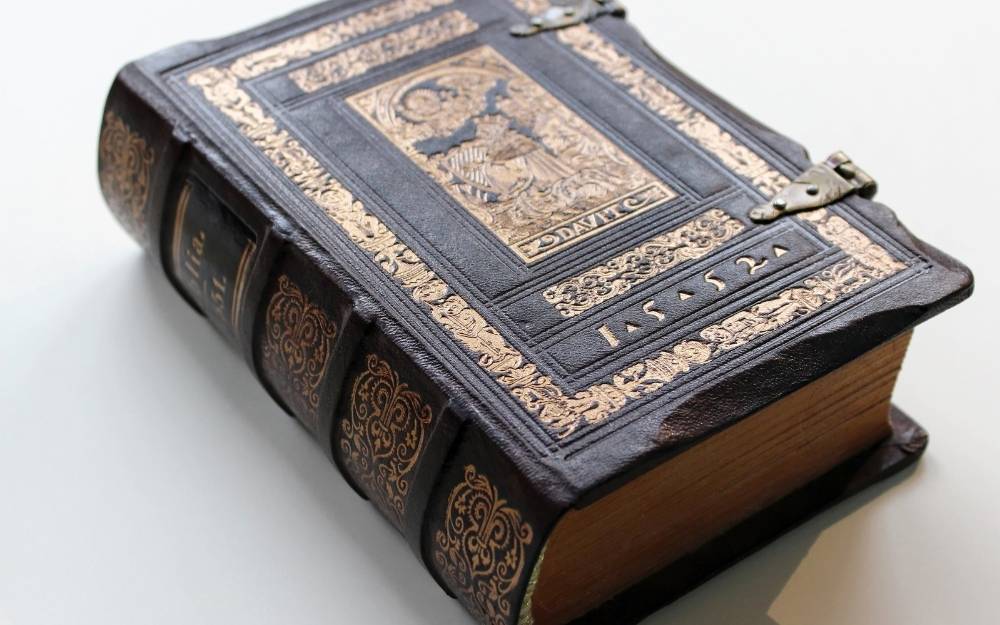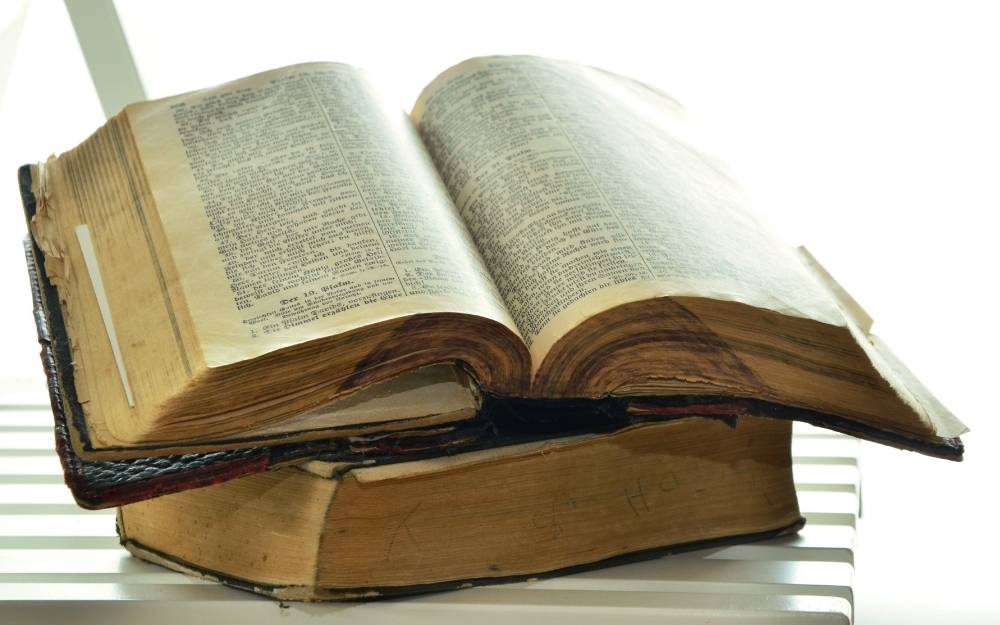Could a centuries-old Bible be more than just a relic of faith, but a historical artefact with stories to tell? The antiquarian market teems with such treasures, where old Bibles for sale offer collectors and enthusiasts a window into the past. From first editions that command substantial sums to more accessible yet poignant facsimiles, the fascination with antique bibles fuels a vibrant market. With prices soaring from $3,700 to nearly $300,000, understanding this market can be as enriching as the sacred texts themselves. Dive into this article to explore the treasured legacy of these revered tomes.
Exploring the Market for Old Bibles
Interest in antique Bibles continues to thrive, as collectors and historians seek these historical treasures for their rich cultural and spiritual heritage. The demand is fuelled by a combination of historical significance and the unique craftsmanship of these texts. Collectors are particularly drawn to rare editions, as well as Bibles with notable provenance or unique features such as illustrations or original bindings.
| Bible Edition | Price Range |
|---|---|
| First Edition King James Bible | $299,500 |
| John Calvin Acts of the Apostles (1585) | $3,700 |
| 1537 Matthew’s Bible | $300,000 |
The antique Bible market is dynamic, with prices primarily influenced by the Bible’s age, rarity, and historical significance. Notable dealers such as The Great Site and the Bible Museum offer a wide range of options. These include both high-value ancient Bibles and more accessible facsimiles, providing opportunities for collectors across different budget levels. The availability of rare Bible collections through these dealers underscores their expertise and dedication in preserving religious and cultural history.
Understanding the Value of Old Bibles
The market for old Bibles for sale is shaped by several important factors, with age often being the most decisive. Bibles printed before 1800 tend to hold greater value due to their rarity and historical significance. These early editions not only showcase the printing and religious practices of their era but also provide collectors and historians with a tangible link to pivotal periods such as the Reformation or the early years of the printing press.
Condition plays a critical role in determining worth. Well-preserved Bibles with intact pages, strong bindings, and minimal wear typically command higher prices than those in poor condition. Issues such as missing pages, tears, or heavy annotations can substantially reduce value. Collectors often prefer volumes that have been carefully maintained or professionally restored to preserve their historical integrity.
Rarity is another defining factor in valuation. Special features such as limited print runs, unique illustrations, or original bindings can significantly enhance desirability. Bibles that include additional content like genealogical records or study notes are especially sought after. Provenance documented ownership history can also elevate a Bible’s appeal, particularly when linked to notable individuals or families.
Factors Influencing the Valuation of Old Bibles:
- Age of the Bible
- Condition of pages and binding
- Rarity and unique features
- Historical significance and context
- Provenance and ownership history
Where to Buy Old Bibles Online

Buying old Bibles online offers unparalleled convenience, allowing collectors and enthusiasts to explore a vast array of options from the comfort of their homes. Online platforms provide access to both high-value collectible items and more budget-friendly choices, making it easier to find Bibles that meet individual preferences and needs.
Popular Online Platforms for Purchasing Old Bibles:
- Amazon: Known for its wide range of products, Amazon offers both new and vintage Bibles, catering to various price points and preferences.
- eBay: A treasure trove for collectors, eBay features auctions and buy-now options for rare and antique Bibles, often with detailed descriptions and photographs.
- The Great Site: Specialising in rare and antique Bibles, this site is ideal for serious collectors seeking historically significant editions.
- Bible Museum: This platform provides a curated selection of ancient Bibles and facsimiles, with a focus on preserving religious heritage.
- AbeBooks: Renowned for its collection of rare books, AbeBooks connects buyers with independent sellers offering unique and hard-to-find Bibles.
When purchasing old Bibles online, verifying authenticity and condition is crucial. Buyers should carefully review listings for detailed information about a Bible’s provenance, condition, and any unique features it might possess. Photographs should clearly show the Bible’s state, and communicating with sellers for additional details can help ensure a satisfying purchase. Consulting experts or independent appraisers can also provide reassurance regarding a Bible’s authenticity.
Key Features That Enhance the Worth of Old Bibles
What makes a Bible historically significant? The King James Bible and the Geneva Bible are prime examples of editions with rich historical and cultural significance. These Bibles are renowned not necessarily for their age but for their impact on religious practices and the English language. The King James Bible, first published in 1611, played a pivotal role in shaping English prose and remains a cornerstone of Christian worship. The Geneva Bible, printed in the mid-16th century, is noted for its study aids and annotations, which influenced Protestant Reformation thought. Such editions are highly prized by collectors and scholars alike due to their contributions to religious and cultural narratives.
What physical attributes enhance a Bible’s value? Features such as provenance, illustrations, and binding quality significantly influence a Bible’s worth. Provenance, or documented ownership history, adds a layer of intrigue, especially if linked to notable figures. Illustrations, particularly woodcuts or hand-coloured prints, enhance aesthetic appeal and monetary value. Red-ruled Bibles, known for the red lines drawn to guide the text, are particularly rare and sought after. Binding quality, especially if original and well-preserved, further boosts a Bible’s desirability. Additional elements like genealogies or metrical psalters can also elevate a Bible’s uniqueness and value.
Tips for Collecting Old Bibles
What factors should collectors consider when collecting old Bibles? Precision: Age, condition, rarity, provenance, and historical significance.
Collecting old Bibles is a pursuit that combines passion for history with appreciation for religious texts. Here are some practical tips to guide collectors:
- Research Historical Context: Understand the era and conditions under which the Bible was printed to appreciate its significance.
- Assess Condition Carefully: Focus on the state of the pages and binding, as well-preserved Bibles are more valuable.
- Evaluate Rarity and Edition: Seek out limited print runs or special editions, which tend to be more desirable.
- Check Provenance: Bibles with documented ownership history, especially linked to notable figures, can be more valuable.
- Look for Unique Features: Additional texts, illustrations, or original bindings can increase a Bible’s worth.
- Consult Experts: Engage with historians or appraisers to verify authenticity and gain insights into the Bible’s significance.
Engaging with the Bible collecting community can enhance a collector’s experience. Participating in auctions and joining mailing lists offers access to unique finds and insights into market trends. Networking with fellow enthusiasts provides opportunities to share knowledge, discuss rare editions, and learn about upcoming sales.
Assessing the Authenticity of Ancient Bibles

How can one verify the authenticity of an ancient Bible? Precision: By examining the printing date, physical characteristics, and historical documentation. These elements are essential in confirming a Bible’s legitimacy. Printing details such as typographical errors, watermarks, and pagination can provide clues about the Bible’s origin and authenticity. Historical documentation, including ownership records and bibliographic references, further supports verification efforts.
Consulting experts is often necessary for a thorough evaluation. Professional appraisers or historians can offer insights into a Bible’s provenance and collation, which are critical in establishing authenticity. Provenance refers to the documented history of the Bible’s ownership, which can confirm its legitimacy and enhance its value. Collation involves checking the sequence of pages to ensure completeness and consistency with known editions.
Authenticity Indicators to Look For:
- Printing date and typographical details
- Presence of watermarks and unique markings
- Historical documentation and provenance records
- Expert evaluations and bibliographic references
Restoring and Preserving Old Bibles
Preservation of old Bibles is crucial for maintaining their historical and monetary value. Proper restoration and preservation techniques ensure that these historic books can be appreciated by future generations. Such efforts not only extend the lifespan of the Bible but also protect its cultural and spiritual significance.
Techniques for Preserving and Restoring Old Bibles:
- Proper Handling: Always wash hands before handling and avoid using bare hands; instead, use gloves to prevent oils and dirt from damaging pages.
- Controlled Environment: Store Bibles in a stable environment, avoiding high humidity and temperature fluctuations that can lead to deterioration.
- Archival Storage: Use acid-free boxes and folders to prevent chemical reactions that could harm the paper.
- Gentle Cleaning: Carefully dust the Bible with a soft brush or cloth; avoid using any cleaning agents that could cause damage.
- Repair and Binding: Minor repairs can be done using archival tapes, but extensive repairs should be left to professionals.
Professional help is advisable when a Bible requires significant restoration. Experts in book conservation possess the skills and knowledge needed to repair bindings, pages, and other elements without compromising the item’s integrity. Seeking professional services ensures that restoration is done accurately, preserving both the physical structure and historical value of the Bible.
Selling Old Bibles: A Guide
How can someone sell an old Bible effectively? The process involves using both online and in-person selling options. Online platforms, such as eBay and Amazon, offer a wide audience and ease of sale, but authenticity and detailed descriptions are crucial to attract serious buyers. Antique dealers in the UK provide a physical venue where potential buyers can inspect the Bibles firsthand, which can enhance buyer confidence. Auctions are another viable option, especially for rare and high-value Bibles, as they can attract collectors willing to pay premium prices for unique items.
What are the key considerations when pricing and understanding market trends for old Bibles? Precision: Research and knowledge of current market demand and trends are essential. Antiquarian book fairs and online marketplaces can provide insights into pricing strategies. Pricing should reflect the age, rarity, and condition of the Bible, with older and rarer editions typically commanding higher prices. Staying informed about market trends can help sellers anticipate shifts in demand and adjust pricing accordingly.
Tips for Effective Selling:
- Research Thoroughly: Understand the specific features and historical significance of the Bible to set a competitive price.
- Highlight Unique Features: Emphasise provenance, illustrations, and any distinctive characteristics in descriptions.
- Engage with Experts: Seek advice from appraisers or dealers to verify authenticity and gain pricing insights.
The Historical and Cultural Significance of Old Bibles

Old Bibles are invaluable for their profound impact on society and language throughout history. They are not merely religious texts but are pivotal artefacts that have shaped cultural narratives and language development. These texts have provided moral and ethical guidance, influenced literary styles, and served as historical records of religious practices. Their translations and interpretations have sparked theological debates and cultural shifts, reflecting the dynamic interplay between religion and society. Their significance extends beyond their religious content to their role in cultural evolution, making them treasured items for both collectors and historians.
King James Bible
The King James Bible, first published in 1611, is renowned for its profound influence on the English language and religious practices. Precision: Its majestic prose and rhythmic language have left an indelible mark on English literature, contributing phrases and idioms still in use today. The King James Bible played a crucial role in standardising English, making it accessible to a broader audience and facilitating a shared religious experience. Its translation was instrumental in the spread of Protestantism, reinforcing doctrinal teachings and shaping worship practices across English-speaking nations.
Geneva Bible
The Geneva Bible, produced in the mid-16th century, was pivotal in the Reformation and is celebrated for its study features. Precision: It was the first English Bible to include numbered verses and extensive marginal notes, aiding personal study and interpretation. These features made it a popular choice among Puritans and influenced religious thought during the Reformation. The Geneva Bible’s annotations provided insights into Calvinist teachings, nurturing a spirit of inquiry and debate. Its role in promoting literacy and theological exploration underscores its historical significance and enduring legacy.
Final Words
In examining the market for old Bibles, readers gained insights into the diversity of options available, ranging from rare first editions to more accessible facsimiles. Pricing, influenced by factors such as age and rarity, varies significantly. Understanding the value of ancient Bibles requires considering elements like condition and provenance.
For those looking to acquire old Bibles, online platforms offer numerous opportunities, though verifying authenticity remains critical. Key features such as illustrations and historical significance enhance value, while collecting tips aid enthusiasts in expanding their collections.
Ultimately, whether purchasing or selling old Bibles, engaging with this market brings cultural and historical treasures to light, enriching both collectors and the broader community.

A music journalist and audio archivist, Toby specialises in deep dives into discographies, band evolution, and the production techniques that shaped iconic sounds across decades.

